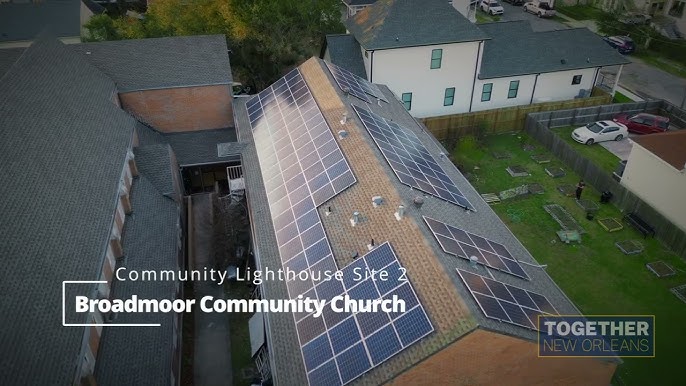

Nina Lakhani, a reporter for The Guardian, introduces us to the Community Lighthouse Network, a group of New Orleans congregations, including a Black megachurch, tackling the effects of climate change in the Big Easy. Here is a taste of Lakhani’s piece:
Like many community-based solutions, the community lighthouse network in New Orleans can be traced back to a crisis moment when people realised that something had to change and they – not elected officials – would have to make it happen.
“For [Hurricane] Ida we were ready with showers, mattresses, shelter and food, but once again the electricity was out so we couldn’t serve our community,” said Antoine Barriere, a 61-year-old pastor. “The power was the missing piece.
“We realised that we had to stop waiting for a fix and do it ourselves. We need to get off the grid and be self-sufficient, as with climate change we’re going to get more disasters.”
In late August 2021, several faith leaders were on a Zoom call during yet another citywide blackout which left vulnerable residents struggling to cope with extreme heat and humidity. The power lines had been knocked out by Hurricane Ida, a category 4 Atlantic storm that had made landfall on 29 August, exactly 16 years after Hurricane Katrina.
Ida left some parts of New Orleans in the dark for 10 days and overwhelmed the city’s emergency response efforts. But a couple of months earlier a new network had been launched called Together New Orleans (TNO), which included churches, mosques, synagogues, unions and environmental nonprofits whose leaders are working across historical racial and religious divides to build collective political power and challenge longstanding anti-sustainable pro-business policies.
The fix, they decided, would be the community lighthouse network, solar-powered disaster response hubs that could transform the city’s approach to resilience for climate and other natural disasters.
On a bright, balmy autumn morning a couple of weeks ago Barriere climbed a long, steep ladder to show me the 460 solar panels that now cover a third or so of his church’s flat roof.
The solar panels were generating more than enough energy to power Household of Faith, a non-denominational megachurch with 4,000 mostly Black parishioners in New Orleans East. Downstairs, a cabinet was stacked with backup batteries that were fully charged in case of a power outage – a frequent occurrence thanks to the low-lying city’s vulnerability to hurricanes, thunderstorms, high winds, extreme heat and flooding.
In a worst-case scenario – no sun, thundery dark skies and power outage – the backup batteries could power essential appliances for a couple of days including the water heater, five commercial fridge freezers storing perishables for the weekly food pantry, and air conditioning for the vast main hall which could be converted into a dormitory-style shelter.
But on this brilliant cloudless morning, most of the solar-generated energy was going into the city’s electric grid. New Orleans’ one-for-one net metering scheme allows the church to offset its excess clean energy against the utility’s dirty energy, and this should become a net zero facility within 12 months.
Household of Faith is among seven, and so far the largest, community lighthouse, but TNO has ambitions to build dozens more and is working with sister networks statewide.
Read the rest here.